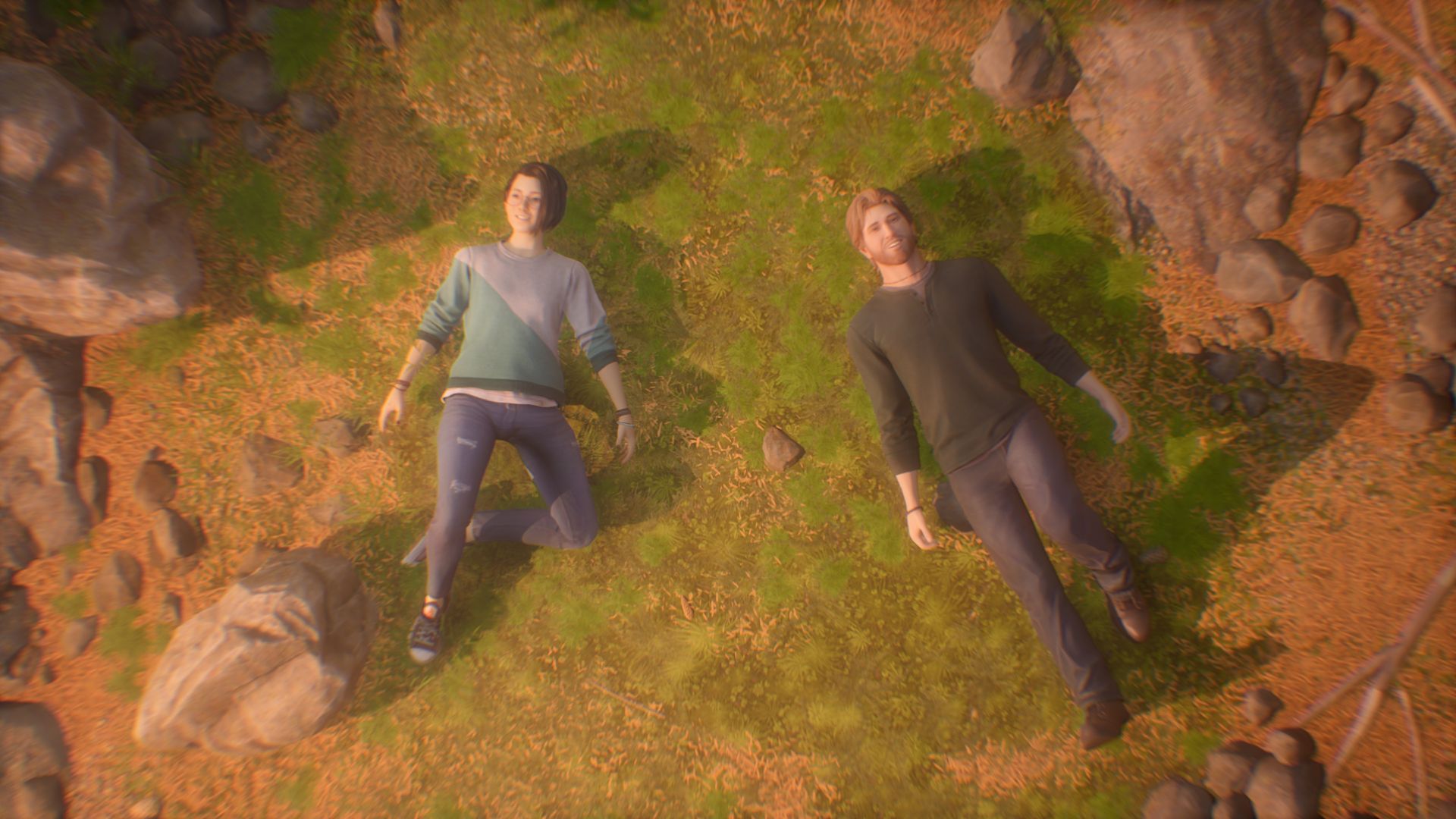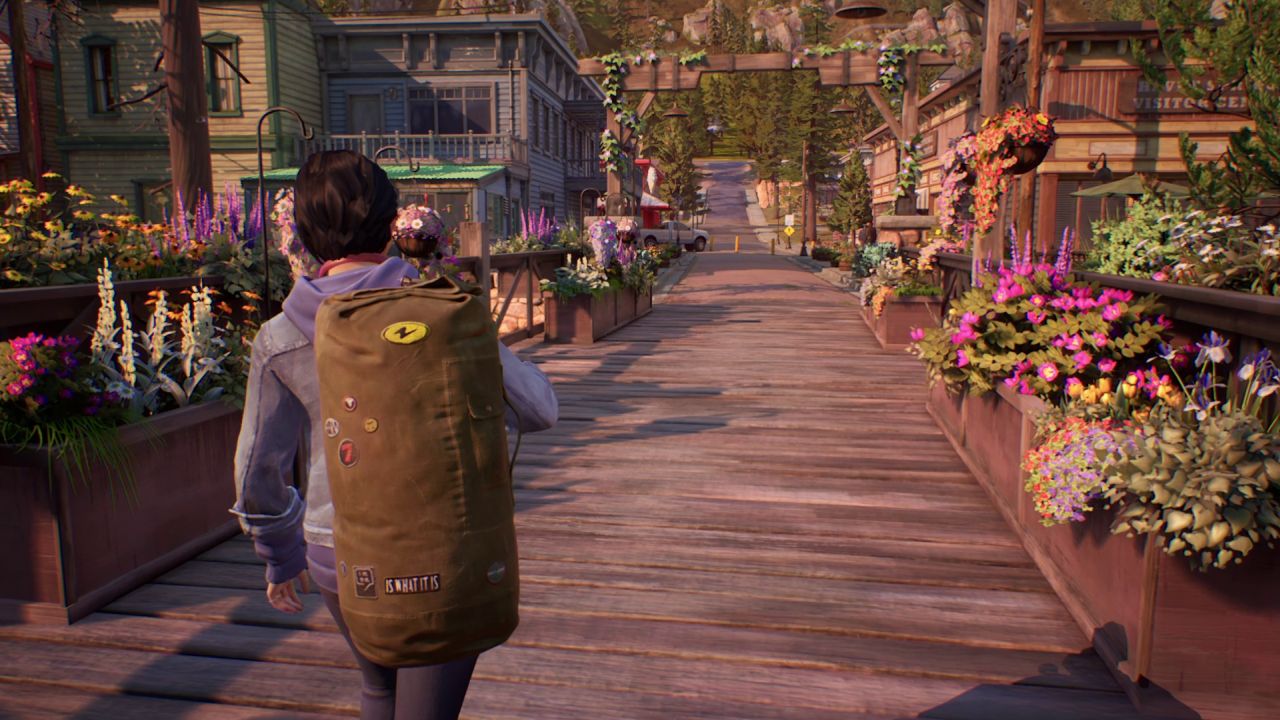Fortunately Deck Nine successfully managed the tightrope walk of honouring the series’ existing DNA, while still taking the Life Is Strange world in new directions. To find out more about how it was done, I sat down with Philip Lawrence and Sarah Van Rompeay, respectively the Senior Narrative Designer and Senior Producer at Square Enix External Studios. One of the most important parts of Life Is Strange’s DNA is, of course, the supernatural abilities of its protagonists. While the series’ original hero Max Caulfield travelled through time and Life Is Strange 2 saw Daniel Diaz accidentally flipping cars with telekinesis, True Colors took an unusual approach with Alex Chen’s ability: empathy. As powers go it’s maybe not the most immediately obvious, but it’s profoundly Life Is Strange, as Lawrence points out. “You say it’s not an obvious one,” says Lawrence, “but when we were testing with fans, it was something they expressed an interest in. Life Is Strange has always been about emotions, that’s absolutely the heart of these games. With empathy, it felt that’s what these games are all about. So let’s move it front and centre and make it a power.” Though Lawrence rejects the “superpower” moniker, pointing out that the team’s focus is always to ground their characters’ abilities in reality as much as possible.“Yes, the powers are one element of fantasy, but everything else is grounded in reality, the characters, the real-life issues, the themes. The powers are one big concession to imagination, if you like,” he explains “But because of that, it has to be absolutely rooted in the character. It’s their backstory, it’s their present dilemma, it’s a challenge that they face in the course of the game and of course, it’s a tool they use to face that challenge.” Consequently ‘who is the main character?’ is one of the first things they work on in development, and the fact that changes each time is, Lawrence jokes, “ a rod for our own backs!” - but it does have advantages. “[it] allows us to explore a different power, and develop it in a way that really resonates with the character, and the themes that we’re going to want to explore through that character. We develop the character and the power very much in tandem, right from the outset.” I’m curious about that rod for their backs, and the work of concepting a new LIS protagonist.With the appeal of the franchise having always been rooted in the strength of its characters, it must be a daunting process - particularly for a studio taking on an existing and beloved IP. “It’s a very organic process, which takes a very long time,” says Lawrence. “We spend many months in the beginning of development in the concepting phase. We have a writers room out at Deck Nine in Colorado, with a very diverse and inclusive writing team, who offer very different perspectives on story and character, and very different life experiences.” Lawrence explains that a lot of finding the character is in the casting, especially now that they use full performance capture with the actors. “Once we’d cast Erika Mori as Alex, it was a back and forth process where the writing team would see what she was doing with the material they were giving her, and they would write to the strengths of the character as she was portraying it. So much rests on the shoulders of the lead actors in these games, it’s a pretty gargantuan acting task.” The full-motion capture is a first for the series, whose highest emotional moments were sometimes undercut by the characters’ somewhat blank facial expressions, particularly in the first game. It’s tied with a massive boost in the game’s graphics, with True Colors far and away being the best looking Life Is Strange game to date. “Deck Nine were very keen to use motion capture, and it came with some risks because there were a lot of unknowns about it,” says Van Rompeay. “But we agreed it was the right thing to do, because we really wanted to push the performance, the nuance and the fidelity of the acting. Deck Nine really embraced it, they did so much research during pre production and development, and are constantly improving the pipelines, finding ways to save time, improve the output and get a better quality. It’s become the beating heart of the game.” “Erika just kind of stepped in and brought Alex vividly to life,” says Lawrence. “From a creative viewpoint, it was a wonderful voyage of exploration, because once you start to get that full performance with all the tiny nuances of facial expressions, you can then start writing to that and leave out some dialogue, because an actress like Erica can just sell the emotion without saying a word.” Motion capture aside, perhaps the most immediately noticeable change in True Colors is the shift away from the episodic release model. While the game is still split into chapters, offering the usual breakdown of how your choices stack up against those of other players, True Colors was the first Life Is Strange game to release as a complete experience. “I mean, it’s partly about player choice,” says Lawrence. “We were careful to structure a story around the five chapters, so that structurally it feels very in line with earlier Life Is Strange titles. So if players want to step back, reflect and have those watercooler moments with the community, they can. But for those who would be frustrated by the episodic release pattern, we save them from those frustrations. “And I think from a creative point of view, it allowed us to concentrate on developing the story, getting the scripts into a great position, and then producing a game. So we didn’t have that awkwardness of the episodic model where you’re rushing to production on the scripted content for the first episode, and then moving on to the next one. Approaching it this way is a lot more coherent and organic, I think.” It’s also a sign of the episodic model going somewhat out of style. While it has its benefits, the unreliable world of game development schedules makes consistent episodic releases incredibly difficult to keep up - and often frustrates more than it entertains fans. So as Deck Nine and Square Enix move forward with the Life is Strange torch, is the episodic model a thing of the past? “I can’t imagine we’d go back to the episodic model,” says Lawrence. “The reaction has been very positive. I think we were careful to keep that episodic structure, because that does seem to appeal to players. That’s all part of the DNA of Life is Strange. As you can imagine, it was a decision that was talked about and agonised over quite a bit, but I think on reflection it was the right decision.” All of which goes to show that the future of the series is hopefully in safe hands - going by the success of True Colors, at any rate. Still, even with all that extra support and development money behind the game, taking on any other studio’s IP has to have been a daunting prospect - even with their experience on Before the Storm taken into account. “I’ve never directly asked them this, but they wouldn’t be human if they didn’t have some apprehension!” laughs Lawrence. “Before The Storm was a very useful stepping stone. It’s obviously a gorgeous game in its own right, but it’s a smaller game, and a game where they were inheriting characters and settings.” He describes that game as great onboarding ground. “But coming up with a new character, a new setting and raising the benchmark in terms of visual fidelity for True Colors was a huge task for them to undertake.” I think they nailed it.


